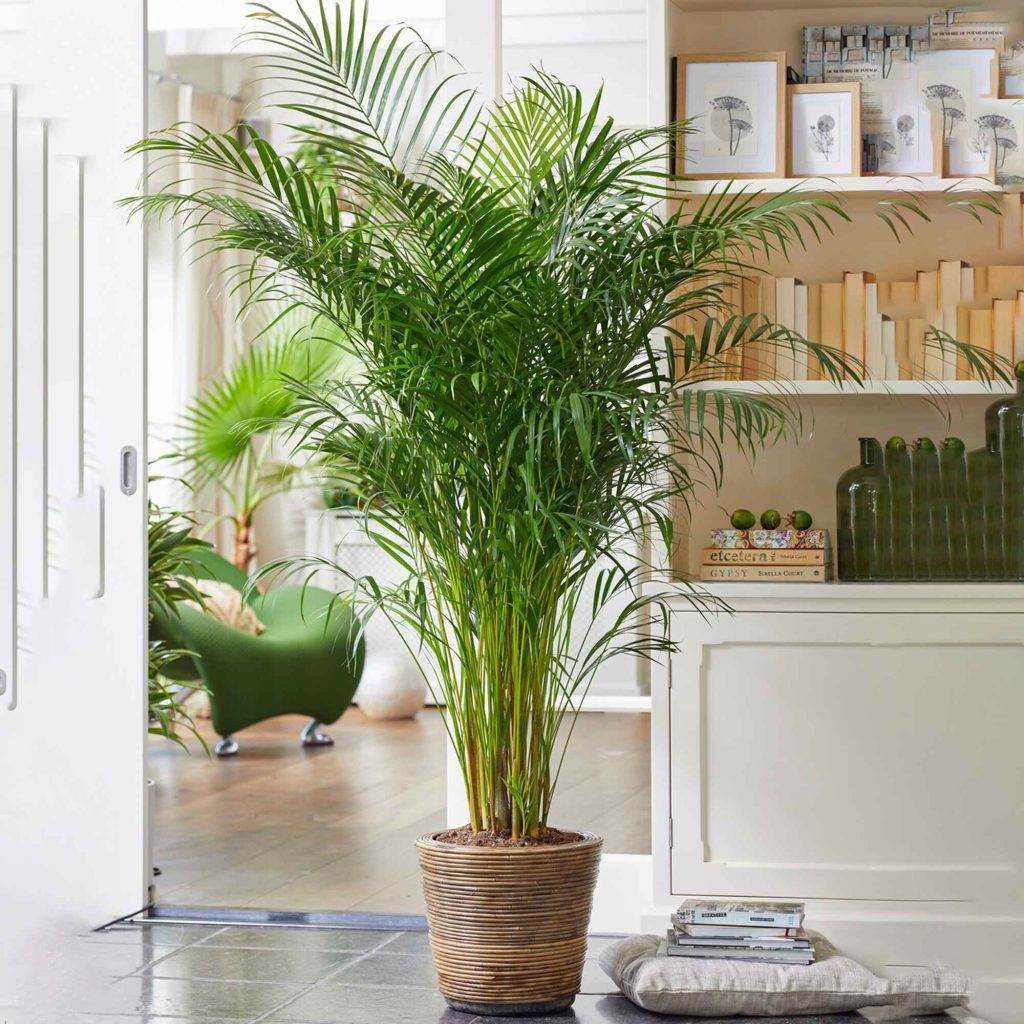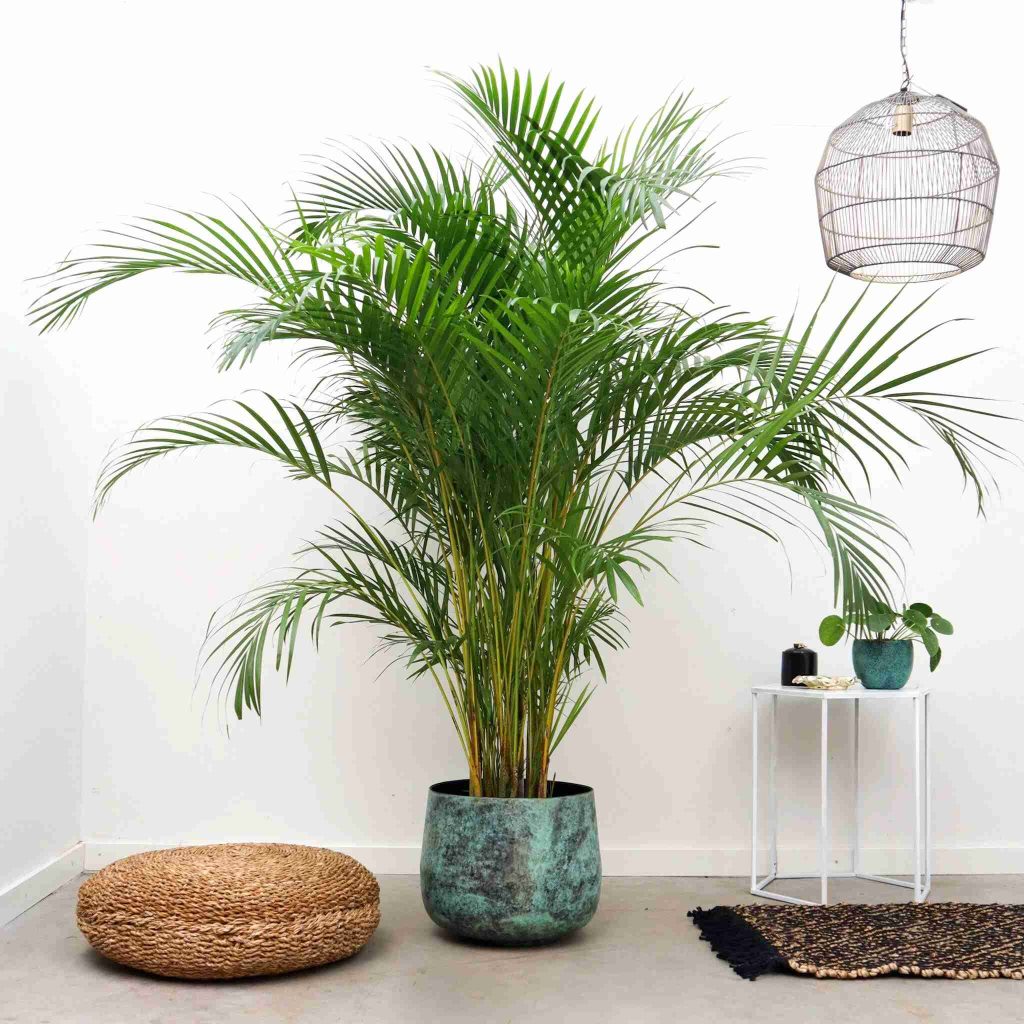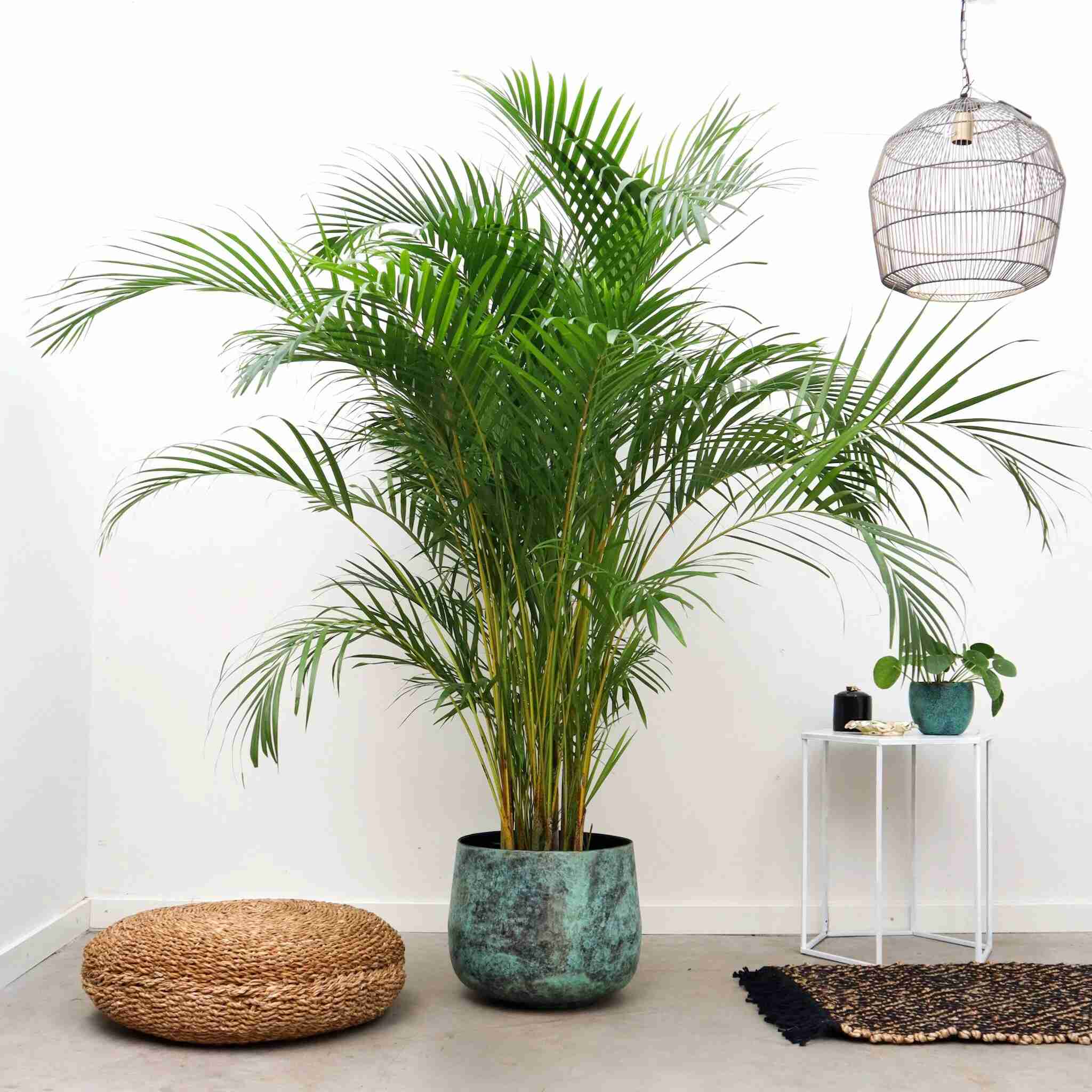Overview
- The Areca Palm, scientifically known as Dypsis lutescens, is commonly referred to as the Butterfly Palm, Golden Cane Palm, or Bamboo Palm.
- Native to Madagascar, this tall and elegant plant features feathery, arching fronds that bring a lush, tropical vibe to indoor spaces.
- Its graceful appearance makes it a popular choice for homes and offices alike.
Benefits of Growing Areca Palm

- Areca Palms act as natural humidifiers by releasing moisture into the air, making indoor environments more comfortable.
- They help purify the air by removing toxins such as formaldehyde and xylene.
- With their vibrant green foliage, they add a refreshing tropical touch to any space.
Ideal Growing Conditions
Areca Palms thrive in bright, indirect light, though they can tolerate some direct sunlight. Be cautious of harsh afternoon sun, as it can scorch their delicate leaves. The ideal temperature range is between 18–24°C (65–75°F), and they prefer a humid environment. To keep the plant happy in drier indoor conditions, consider misting its leaves or using a humidifier.
Soil and Potting
To ensure healthy growth, plant your Areca Palm in a well-draining potting mix. A blend specifically designed for palms or general-purpose soil with added sand or perlite works best. Use a pot with drainage holes to avoid waterlogging, and opt for a snug-fitting pot, as the plant’s roots prefer limited space.
Watering Requirements
Consistent moisture is key for Areca Palms, but overwatering can be detrimental. Water the plant when the top inch of soil feels dry, and reduce the frequency during winter to prevent waterlogging. Ensure that excess water drains away, as sitting water can lead to root rot.
Fertilizer Needs
During the growing season, which spans spring and summer, feed your Areca Palm every 2-4 weeks with a balanced liquid fertilizer. In the cooler months of fall and winter, when growth slows down, there is no need to fertilize.

Common Issues and Solutions
Areca Palms may occasionally face challenges. Yellowing leaves often indicate underwatering or a lack of nutrients. Regular watering and periodic fertilizing should resolve this. Brown tips are usually a sign of dry air or fluoride buildup in water. To address this, mist the leaves and use distilled or filtered water for watering. If pests like spider mites or mealybugs appear, clean the leaves with a damp cloth and use insecticidal soap to treat infestations.
Propagation Tips
Propagation is best achieved through division. Carefully separate clumps of stems with roots and replant them in individual pots. Make sure the new plants are potted in suitable soil and given proper care to encourage healthy growth.
Decorating with Areca Palm
The Areca Palm’s versatile beauty makes it an excellent addition to various indoor settings. Place it in a corner of your living room or office to create a natural, uplifting atmosphere. It also looks stunning in large decorative pots and can serve as a stylish natural room divider. For a lush, indoor garden feel, pair it with other tropical plants.
By following these care tips, your Areca Palm will stay healthy and vibrant, bringing life and greenery to your home or office.

